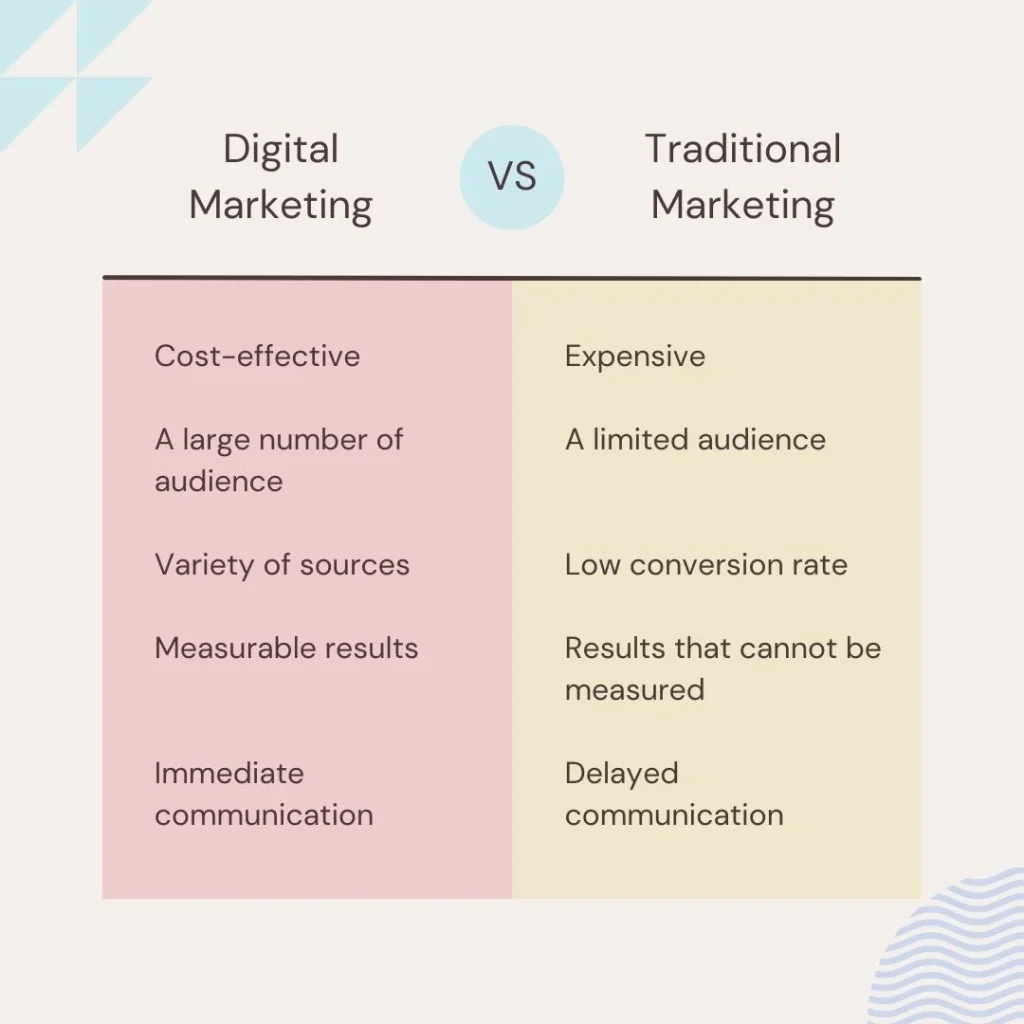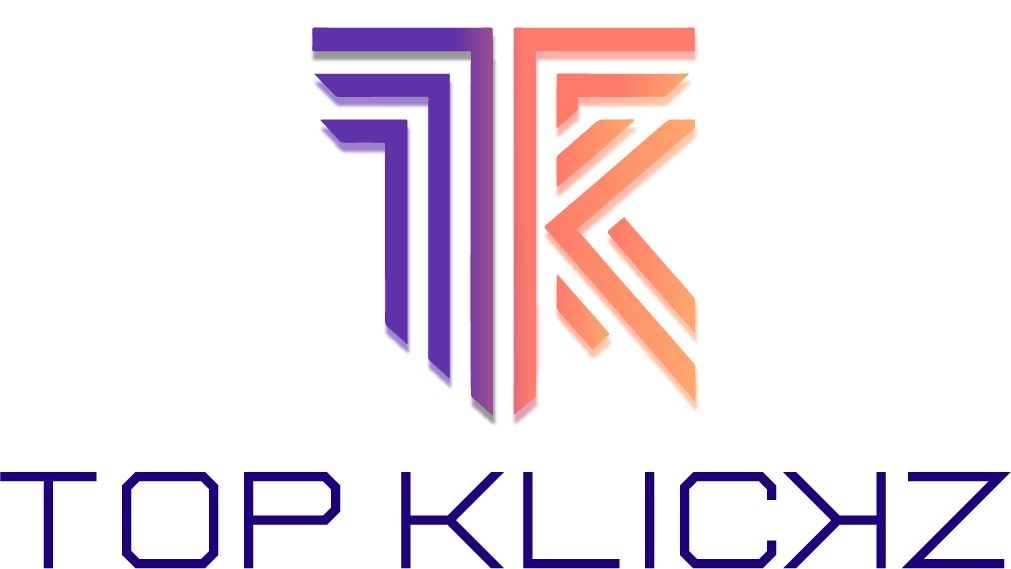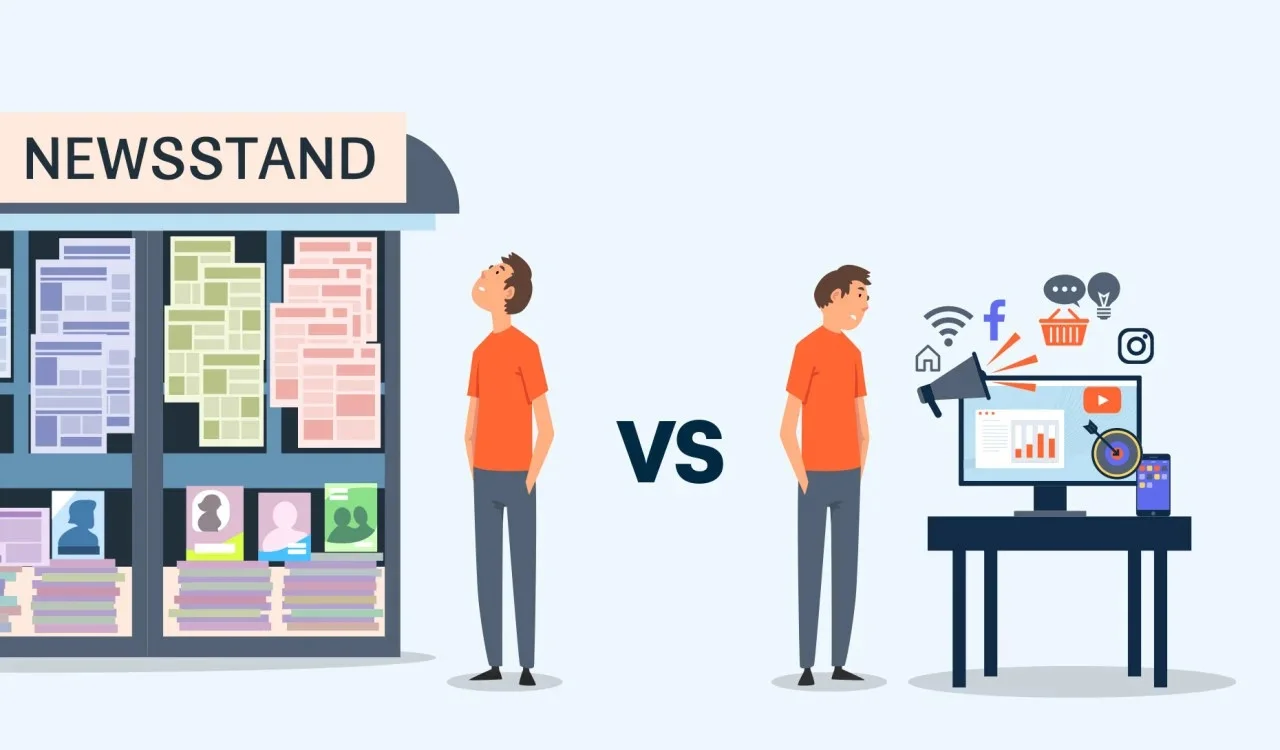Traditional Marketing vs Digital Marketing: Which is Right for Your Business?
In today’s rapidly evolving marketing landscape, businesses are often faced with the challenge of choosing between traditional marketing vs digital marketing. Or finding the right balance between the two. Each approach has its unique strengths, benefits, and limitations. This blog will explore the key differences between traditional marketing and digital marketing, helping you decide which strategy is best suited for your business.
What is traditional marketing?
Traditional marketing can be described as the set of practices for promoting products, services, and brands which in use in the past. Such methods are print media, such as newspapers and magazines; broadcast media, which includes television and radio; direct mail; and outdoor, which are billboards and posters, respectively.
These methods involve the use of physical items and direct contacts to target possible customers in order to inform them about the product. Mass marketing has been one of the most effective approaches to marketing for many years but has slowly been modified.
Key Characteristics of Traditional Marketing:
Tradional Marketing is normally a form of communication where companies engage their clients and send information in one direction without receiving a reply simultaneously.
It may often necessitate a large amount of funding because of the cost of prints, media time, and advertising bills. Also, traditional marketing strategies are more time-consuming to plan and execute than digital marketing because they require extensive planning to get results.
Tangibility: Traditional marketing materials, such as brochures, business cards, and flyers, have a physical presence that can be handed out, mailed, or displayed in public spaces.
Broad Reach: Television, radio, and print media can reach large audiences, making them ideal for businesses targeting a wide demographic.
Credibility: Established media outlets often carry a sense of trust and authority, lending credibility to the ads they run.
You may also like to read: How to Earn Global: Tips and Strategies for Worldwide Income
Advantages of Traditional Marketing:
Traditional marketing methods are considered to provide a more reliable and credible message as per the reception of the message by the audiences, especially the older generation, who are more in tune with such media.
These methods can help build a long-term image through touch, such as, for instance, receiving a well-designed brochure or an everyday view of a billboard.
Wide Audience Reach: Traditional media can reach a broad audience, especially through TV and radio, making it effective for brand awareness.
Longevity: Print materials like magazines or billboards can have a long shelf life, providing ongoing exposure.
Memorable: Physical marketing materials can leave a lasting impression on consumers, making them more memorable than digital ads.
Disadvantages of Traditional Marketing:
One of the major disadvantages of Traditional Marketing is its definition and implementation. It is not easy to target specific audiences at a precise point in time. Popular marketing communicates mainly to the general population; it, therefore, puts a lot of effort into hardly interested people.
The performance of even a basic traditional marketing campaign is often hard to quantify, which makes it hard to determine ROI and make decisions based on data.
High Costs: Producing and placing ads in traditional media can be expensive, especially for small businesses.
Limited Interaction: Traditional marketing is a one-way communication channel with little opportunity for engagement or feedback.
Difficult to Measure ROI: Tracking the success of traditional marketing campaigns can be challenging, making it harder to measure return on investment (ROI).
What is digital marketing?
Digital marketing includes all marketing that is done through the use of the Internet or electronic devices. Thus, activities like search engine optimization (SEO), social media marketing, email marketing, content marketing, online advertising, etc.

This is because it adopts the use of digital media in performing its communication with customers; the interactive and dynamic means of communicating products and services are guaranteed. Digital marketing has now become an uncontainable sector with the increase in Internet and mobile stations.
Key Characteristics of Digital Marketing:
Digital marketing enables the presentation of highly niche marketing messages and initiatives that can be targeted at populations with specific demographic profiles or populations exhibiting certain behaviors or levels of interest in the business’s products or services. Such precision is important to guarantee that the right messages of marketing are delivered to the right people.

It has real-time analysis and display of results for marketers to help them modify their approaches for better performance. Digital marketing is cheaper, or at least less costly, than other marketing techniques, including electronic word-of-mouth costs.
Targeted Reach: Digital marketing allows businesses to target specific demographics, interests, and behaviors, ensuring that the right message reaches the right audience.
Measurable Results: With analytics tools, businesses can track the performance of their digital campaigns in real-time, allowing for adjustments to maximize ROI.
Interactive: Digital marketing fosters two-way communication, enabling businesses to engage with customers through comments, likes, shares, and direct messages.
Advantages of Digital Marketing:
One of the biggest advantages is that it can be quite easily measured with the help of a range of analytical tools. It also aids in analyzing consumer trends and the overall response that can be made to enhance the results of the campaigns.
Digital marketing also promotes customer relations through the active use of customer contacts through social media and any other means, including comments and email communications.
• Cost-effective: Most digital marketing tools will cost less than traditional marketing techniques and, hence, can be used by companies of all sizes.
• Real-Time Results: Entrepreneurs can be sure that they can view the results of their campaigns immediately and make the necessary changes when and where possible.
• Highly Targeted: Digital marketing enables the marketer to narrow down the audience to what they want based on different factors, including age, location, interests, and behavior on social platforms.
• Global Reach: Another advantage of digital marketing is that when a business audience is targeted, geographic barriers are eliminated.
Disadvantages of Digital Marketing:
It is a demanding field and, at times, proves extremely stressful because it is a never-ending cycle of changes and updates. It is challenging to capture the attention of the audience or client base since there is increased complexity and density in the digital environment.
However, there is a threat of ‘ad blindness’ that may set in with consumers because of accentuated exposure to online advertising channels.
• Saturation: It is crowded online, and advertisements surround consumers and have difficult targets to achieve.
• Requires Constant Management: Digital marketing often needs periodic checks and some changes to keep up with the results and the audience.
• Privacy Concerns: As the protection of data becomes an important factor, businesspersons have to solve the issues of regulative and non-regulative compliance with consumer’s rights to privacy.
A Comparison of Traditional Marketing vs Digital Marketing

Traditional Marketing creates real, believable images, which, if well-designed, can be very appealing and persuasive in relatively saturated markets, especially with the older generation. However, it is not as accurate as the Digital Marketing approach, which offers methods to target space in real time.
Digital marketing, on the other hand, performs well when it comes to targeting and flexibility and is comparatively cheaper. However, it needs constant change and might be viewed as overpopulated. They are both good in their own right. They can be combined effectively, depending on the marketing goals of the organization.
1. Cost:
• Traditional marketing: usually more costly than other forms of production ( e.g., television advertisements, billboards).
• Digital marketing: even cheaper, with various prices to suit anyone’s budget.
2. Audience Reach:
• Traditional marketing: useful for the attainment of a less selective and broad public.
• Digital marketing: enables specifying the audience and can avoid a rather broad distribution.
3. Measurability:
• Traditional marketing: Compared to QT, it is quite challenging to quantify. Hence, it is not easy to keep a tab on the RoI.
• Digital marketing: it is very tractable, as it produces the most quantifiable and measurable data and even comes with more elaborate tracking mechanisms and analytic techniques.
4. Engagement:
• Traditional marketing: This can be characterized as a one-shot and limited interaction.
• Digital Marketing: two-way information exchange enhances engagement and expectations of similar responses.
5. Longevity:
• Traditional Marketing: Other forms of advertising, such as print ads and billboards, can have long-lasting effects.
• Digital Marketing: Campaigns can be short-term, despite the possibility of such content as blog posts or videos earning attention at some point in the future.
Which Marketing Strategy is Right for Your Business?
The selection of a traditional or digital marketing strategy has to do with the nature of the business, its objectives, target customers, and available resources. For companies targeting the local or older market, it is better to use traditional marketing.
On the other hand, for those who are marketing their products to young, high-technology users, digital marketing is perhaps the best available platform to engage and grow. Sometimes, it is best to find a blend between traditional and advanced digital marketing to get the most effective outcome.
The advantages and disadvantages of traditional marketing and digital marketing have to be considered, focusing on several factors such as audience, cost, and objectives. For example:
• If you want to reach a very large audience involving the elderly, then traditional marketing, such as television or post office drops.
• If the audience to be reached comprises the young and vibrant tech-savvy generation, then social media and search engine marketing would be more effective.
• There are many reasons why digital marketing is a sensible strategy; however, for companies with a small budget, this is one of the most attractive advantages as it allows getting a lot of responses for quite a small cost.
• For firms that have established their brands, traditional marketing can support digital strategies by offering tangible and memorable experiences.
Conclusion
In the battle between traditional marketing and digital marketing, there’s no one-size-fits-all answer. The best approach often involves a combination of both, leveraging the strengths of each to create a comprehensive marketing strategy. By understanding the unique advantages and disadvantages of traditional and digital marketing, businesses can make informed decisions that align with their objectives and maximize their impact in the marketplace.
FAQ
1 What is the main difference between traditional marketing and digital marketing?
Traditional marketing uses conventional channels like print, TV, radio, and direct mail to reach a broad audience, often with one-way communication. Digital marketing leverages online platforms such as websites, social media, email, and search engines to target specific audiences with interactive, data-driven campaigns.
2 Which is more cost-effective, traditional marketing or digital marketing?
Digital marketing is generally more cost-effective, offering flexible options to fit various budgets. Traditional marketing often involves higher costs due to production expenses and media placement fees.
3 Can traditional marketing and digital marketing be used together?
Yes, combining both traditional and digital marketing can create a well-rounded strategy. This approach allows businesses to reach a wider audience while taking advantage of the strengths of each method.
4 How does audience targeting differ between traditional and digital marketing?
In traditional marketing, targeting is generally broader and based on the audience of a specific media channel (e.g., TV show viewers or newspaper readers). Digital marketing allows for precise targeting based on demographics, interests, online behavior, and other data, making it possible to reach very specific groups.
5 What are some examples of digital marketing channels?
- Examples of digital marketing channels include:
- Social Media: Facebook, Instagram, LinkedIn, and Twitter
- Search Engines: Google Ads, SEO
- Email Marketing: Newsletters, promotional emails
- Content Marketing: Blogs, videos, and Infographics
- Online Advertising: Display ads, pay-per-click (PPC) ads
6 Which marketing strategy should I choose for a new business?
For a new business, digital marketing is often a great starting point due to its cost-effectiveness, measurable results, and ability to target specific audiences. However, depending on your industry and target market, incorporating some elements of traditional marketing may also be beneficial for broader reach and credibility.

